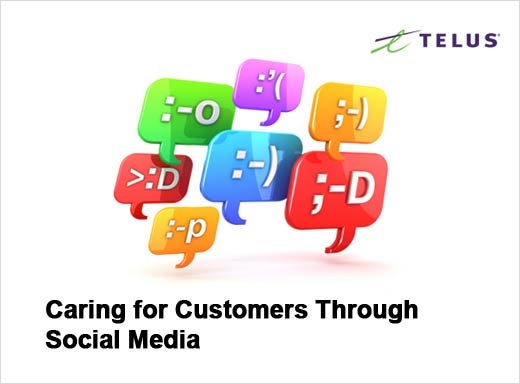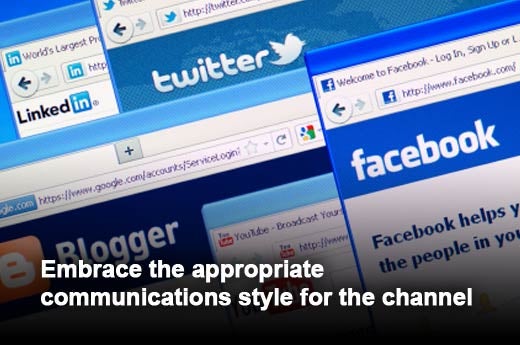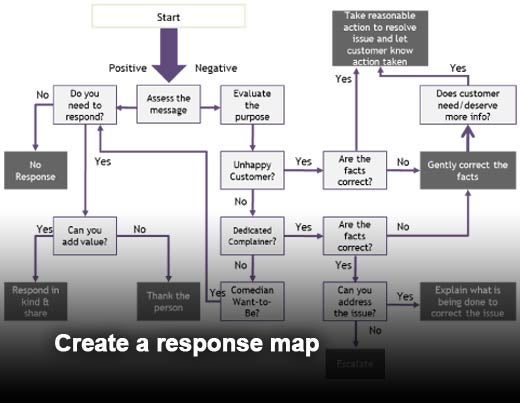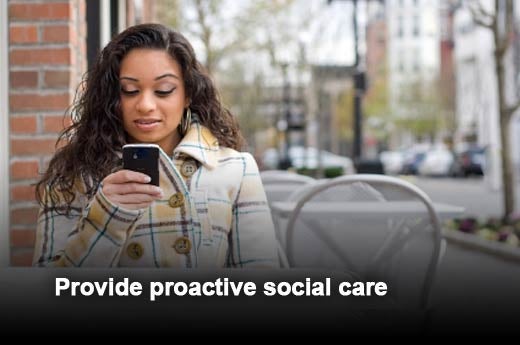A tremendous new customer service opportunity has emerged with the adoption of social media by consumers and the ability for companies to effectively listen to and track conversations about their brands. TELUS International calls this activity “social care,” and it’s defined as the efforts employees make through social media to care for customers. Interestingly, these efforts aren’t necessarily confined to traditional contact center agents working in customer service departments. They are finding some companies empowering not only their well-trained customer service representatives, but also a select group of engineers, product managers and even executives. Tapping into the larger talent pool is one of many strategies companies are using to provide positive customer experiences on the social Web.
Several best practices emerge from research conducted by TELUS International. Some of these practices are already being effectively employed at benchmark companies while others are underutilized practices that represent opportunities for companies to expand and improve their social care efforts.
Click through for five best practices for customer care through social media channels, as identified by TELUS International.
To launch a successful social care program, TELUS recommends defining the vision and objectives, and building a cross-functional team that’s working toward a common goal. It may include people at all levels and departments. At a minimum, the team should have representatives from the following departments outside of customer service:
- Marketing — Promote social support, provide brand briefing on acceptable communication style
- Legal — Define social media policies that govern agent responses
- HR — Define hiring profiles and set training standards for social agents
According to TELUS, Dell exemplifies this strategy — when its Social Media Command Center launched in December 2010, Dell’s Chief Blogger announced that “over 5,000 Dell employees have been trained in social media, and many of those are listening and engaging with customers as part of their jobs.”
Agents must be trained to respond in the character of the brand and the protocol and expectations of the channel. Most companies have communication guidelines that define the voice and tone of the brand. These guidelines are often intended for formal PR and brand communications, but can be adapted for social care training. The communication guidelines should be reviewed so that appropriate guidance can be created for specific channels. In addition, as stated earlier, people are currently writing about customer service issues and seeking written solutions. It is important that when agents respond they use appropriate grammar for the channel to ensure clarity of the response – a miscommunicated post can have broad repercussions if it goes viral.
Building a message map lends some process behind how to respond to public conversations. It reduces the risk to corporations of erratic responses and acts as an efficiency aid for agents who are tasked with managing hundreds of social posts a day. The image above shows a modified message map from USAF and Altimeter that applies to social communication. Both USAF and Altimeter have received recognition for the simplicity and effectiveness of their social media response guidelines, so this serves as one solid example. A response map helps ensure quick and concise delivery of pertinent customer service information.
Reaching out and following through is critical for building real relationships. This can manifest itself in several forms. First, companies get excited to set up social media channels, like Twitter, but then fail to post updated information. Stale = Bad. Second, it’s not just about posting information, but engaging customers and collaborating with them. Collaboration = Good. Third, if you request a customer to communicate with you in another non-social channel, such as voice or email, be sure to follow up the conversation to resolution while tracking that conversation across the channels used.
Follow-through enhances positive customer sentiment toward a company. Even if the information being communicated is not what the customer wants to hear, knowing the agent followed through in a timely and professional manner mitigates the negative impact. According to a recent article in the MIT Sloan Management Review, January 2011, "When Unhappy Customers Strike Back on the Internet," failing to respond does not help customers rule out worst-case inferences. Rather, people tend to err on the sinister side when inventing explanations. At the same time, customers will tolerate problems not being fully resolved as long as the process is seen as fair. In short, follow-through in social care can make or break customer relationships.
Social care agents should embrace the idea of proactive customer care. They have the ability to reach out to customers before they become frustrated and dissatisfied about an issue. For example, a Best Buy Geek Squad agent posted information on Facebook about a new virus penetrating Mac operating systems. There were dozens of appreciative comments from customers for the proactive communication. A similar best practice is the use of your early support cases from other channels to spot problems before they become widespread on the social Web too. Contact customers before they contact you.








